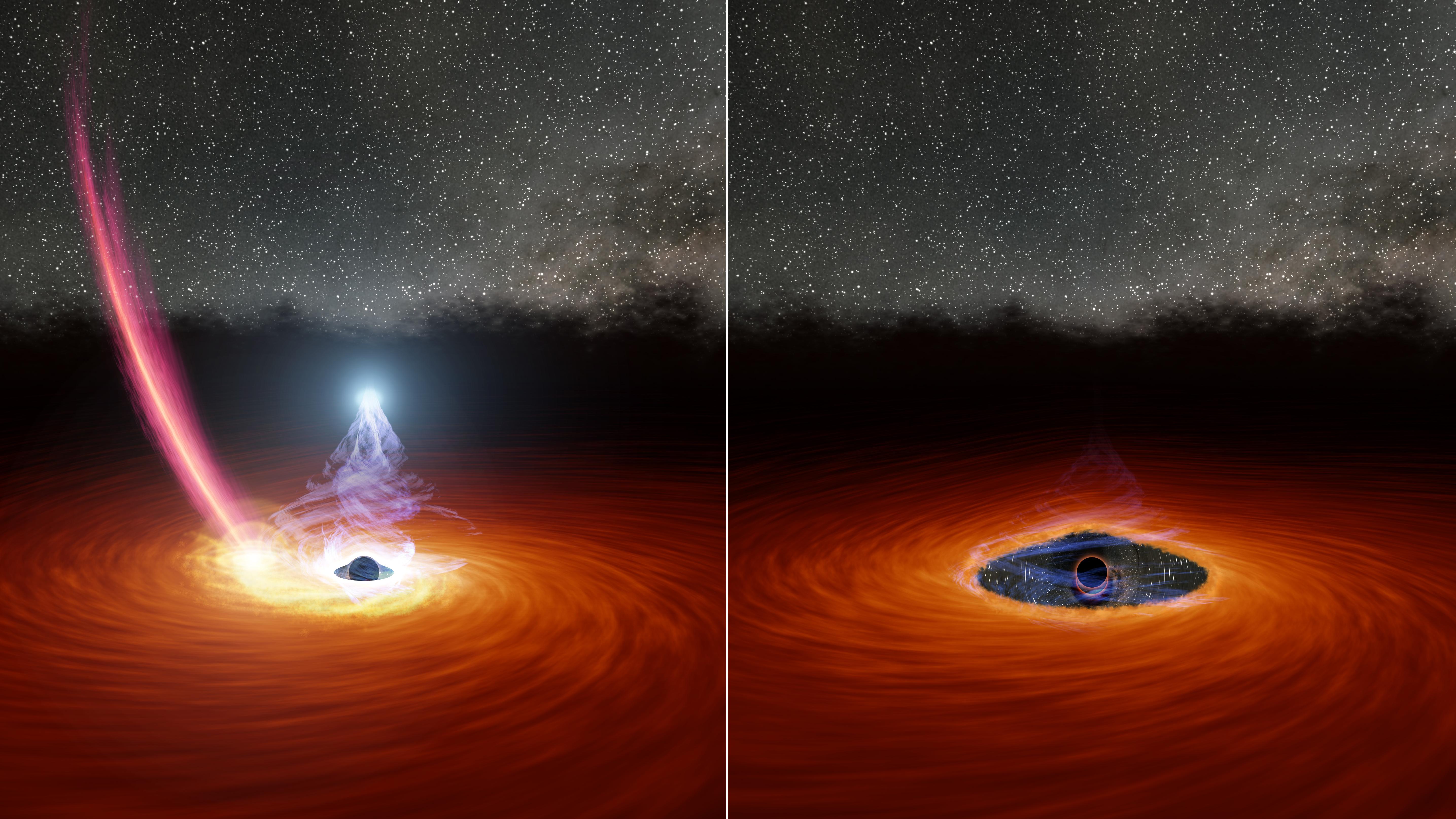The mystery of a black hole's disappearing (and reappearing) meal may be solved
The hungry black hole's feast may have been interrupted by a passing star.
Because black holes can't be studied directly, scientists often watch their feeding habits to understand what these behemoths are doing. So what does it mean when a black hole suddenly stops gobbling up gas completely — and then just as suddenly starts again, hungrier than ever?
That was the puzzle scientists faced as they watched a galaxy known as 1ES 1927+654 over a monthslong span of 2018. Although the bright mess left by a black hole's feeding habits often grows and shrinks, this time, scientists saw something unprecedented: a near-total dimming and then a brightening far beyond the galaxy's previous average.
"We just don't normally see variations like this in accreting black holes," Claudio Ricci, an astrophysicist at Diego Portales University in Chile and lead author of the study, said in a NASA statement.
Related: No escape: Dive into a black hole (infographic)
The first clues that something was off came from observations made by two large survey programs, which scan the skies for flashes, bangs and whizzes against the steady stars. Those early glances prompted the scientists to recruit a few X-ray observatories to get a better idea of what was happening in that patch of sky.
"It was so strange that at first we thought maybe there was something wrong with the data," Ricci said. "When we saw it was real, it was very exciting. But we also had no idea what we were dealing with; no one we talked to had seen anything like this."
Ricci and his colleagues were studying what scientists call a black hole's corona, the stunning halo of incredibly hot gas above and below the black hole's meal, a disk of gas known as an accretion disk. The corona glows bright with X-rays, and the more "food" a black hole is consuming, the brighter the corona gets.
Get the Space.com Newsletter
Breaking space news, the latest updates on rocket launches, skywatching events and more!

Usually, a black hole's corona periodically brightens or dims, say, 100 times over, depending on the black hole's food supply. That's a far cry from what the black hole corona in this particular galaxy did. Over the course of 40 days, scientists managed to watch it dim by a factor of 10,000; then, over more than three months, the corona brightened again, to 20 times more powerful than it had been at the beginning of the event.
Once the scientists confirmed that the confusing data was real, not a mistake, they had to figure out what might be causing the strange fluctuation.
Now, the researchers suspect that the black hole shredded a passing star, inadvertently flinging debris at its own feeding disk. That debris could have dissipated some of the gases, leaving the black hole briefly hungry before gas coalesced again, letting the object resume its feast.
But that scenario isn't necessarily the correct explanation, according to the researchers. "This dataset has a lot of puzzles in it," Erin Kara, an astrophysicist at the Massachusetts Institute of Technology and a coauthor of the new study, said in the same statement. "But that's exciting, because it means we're learning something new about the universe. We think the star hypothesis is a good one, but I also think we're going to be analyzing this event for a long time."
The research is described in a paper published on July 16 in The Astrophysical Journal Letters.
Email Meghan Bartels at mbartels@space.com or follow her on Twitter @meghanbartels. Follow us on Twitter @Spacedotcom and on Facebook.
Join our Space Forums to keep talking space on the latest missions, night sky and more! And if you have a news tip, correction or comment, let us know at: community@space.com.

Meghan is a senior writer at Space.com and has more than five years' experience as a science journalist based in New York City. She joined Space.com in July 2018, with previous writing published in outlets including Newsweek and Audubon. Meghan earned an MA in science journalism from New York University and a BA in classics from Georgetown University, and in her free time she enjoys reading and visiting museums. Follow her on Twitter at @meghanbartels.










